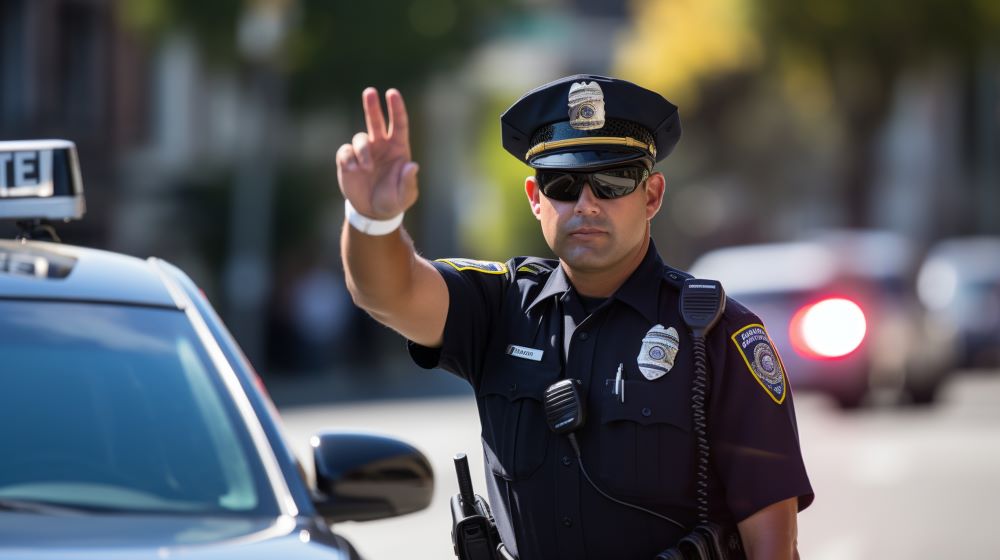Note: The views expressed by guest bloggers and contributors are those of the authors and do not necessarily represent the views of, and should not be attributed to, Campus Safety.
An increasingly popular prank — swatting — has emerged as a concerning threat to the safety and well-being of schools nationwide. Swatting is a form of hoax where an individual makes a false emergency report with the intent of triggering a large-scale response from law enforcement.
This tactic typically involves a false report of a dangerous situation or an active shooter on school grounds. The goal is to prompt a rapid and significant law enforcement response, which may involve armed officers, evacuation procedures, lockdowns, and other emergency measures. In the meantime, innocent students and school staff go into lockdown, barricading themselves inside classrooms and school offices. Until they receive the “all clear” signal, they wait in fear. The event itself is fake, but their trauma is real.
Swatting incidents in schools can cause panic, disrupt educational activities, and divert resources away from legitimate emergencies. According to reports, from September 13 through October 21, 2022, 182 schools in 28 states received swatting calls about false incidents, resulting in loss of instructional time, chaos, emotional trauma for students and staff, property damage, and injuries.
The increase in swatting activity has come during a time when districts are already on high alert and resource-constrained. There are critical measures that should be taken by school leaders to prevent, respond to, and mitigate the impact of such incidents.
Collaborate and Communicate with Local Law Enforcement
Just as schools coordinate with local law enforcement to develop plans for swift response and coordination for active shooter and other emergency incidents, they must establish clear communication channels with these officials in creating a strategy to prepare and respond to swatting. This includes having designated contacts within the school administration and the police department who can quickly share information during these incidents.
Schools can coordinate drills with local agencies to simulate swatting incidents and test their emergency response plans. This collaboration allows schools and law enforcement to identify any gaps or areas for improvement in their procedures. Police officers can also provide training sessions to school staff on recognizing potential signs of swatting and other security threats. This collaboration builds trust, strengthens communication channels, and ensures a more effective response in the event of a swatting incident.
If a swatting incident occurs, schools should cooperate fully with officials during the investigation. It’s crucial to share any relevant evidence, witness statements, or other information that can help identify and apprehend the responsible party.
Use Technology to Locate the Source, Communicate Emergencies, and Detect Unusual Behavior
Robust safety and security systems can help deter potential swatters and provide relevant information to enable schools and law enforcement to distinguish between real emergencies and false alarms.
Installing surveillance cameras at key locations on campus, including entrances, hallways, and common areas, can help monitor any suspicious activity and provide valuable evidence if an incident occurs.
Access control systems can be used by schools to monitor and restrict entry to their buildings. By analyzing access logs, law enforcement can identify who accessed specific areas during the time of the incident and investigate any suspicious or unauthorized entries.
Schools may utilize visitor management systems that require visitors to check in and provide identification upon entry. These systems create a record of individuals present on campus, which can assist law enforcement in narrowing down potential suspects or identifying unusual patterns in visitor behavior.
Mass communication systems, such as emergency notification systems, intercoms, strobe lights, and on-screen messaging, are all critical to disseminating information to staff and students during emergency incidents, including swatting. These systems can generate logs that help establish a timeline of events and identify the origin of communication related to the incident.
Safety response solutions like badge-based silent panic alarms can also be a valuable tool during incidents – including swatting. When a staff member initiates an alert using their wearable badge, designated authorities receive immediate notification.
Technology that incorporates campus maps and building floor plans can point first responders to the location of who and where the alert was initiated and help them determine how to reach that point as quickly as possible. If the incident is determined to be a hoax, officers can then engage with staff and administrators to gain more insight into the situation and help them to identify the source of the threat.
Collect Data on All Incidents
It is vital for schools to collect data on all emergency incidents that occur – from the everyday emergency to the extreme, including swatting.
Collecting data on emergency incidents helps schools understand the nature and frequency of different types of emergencies that occur on their premises. This information allows them to develop effective response protocols, allocate appropriate resources, and train staff accordingly.
By analyzing data, schools can identify patterns or trends in incidents and make informed decisions to enhance emergency preparedness, prioritize areas for improvement, and implement strategies to mitigate potential risks.
This proactive approach allows schools to engage in continuous improvement efforts regarding effective emergency preparedness.
Educate Students and Staff
District and school leaders should have regular conversations with students and staff on swatting. This includes conducting regular training sessions to educate staff and students about swatting and how to recognize the signs of a potential incident. Training should cover appropriate responses, such as reporting suspicious activities and avoiding actions that could escalate the situation.
Conducting regular safety drills is an essential practice for preparedness. These drills should simulate various responses to emergency incidents, such as evacuations, lockdowns, and communication protocols. By practicing these procedures, staff and students become familiar with their roles and responsibilities during an emergency, enabling a more efficient and coordinated response.
Students should also understand the seriousness of carrying out these acts, the chaos they can create, and the consequences. Administrators and staff members should be in a position to support students who report such incidents. Psychological safety is important for students to build trust and confidence in reporting information.
It’s important that district leaders are prepared and have a plan in place for staff that can reduce chaos as much as possible and lessen the chances of widespread panic. Protecting schools from swatting incidents requires a multi-faceted approach that encompasses security measures, communication protocols, preparedness drills, and collaboration with law enforcement.
During a time in which schools are preparing for both worst-case scenarios and swatting, it serves as a reminder that they should continually be looking at how to enhance their safety protocols, making improvements, ensuring staff and students feel safe, and implementing communication to make their strategies more effective.
Jay Floyd is a former superintendent, principal, educator, and current director at CENTEGIX.













